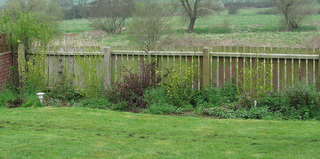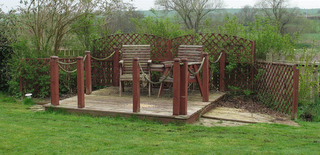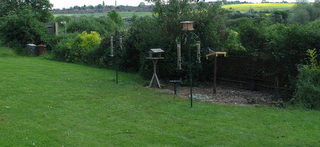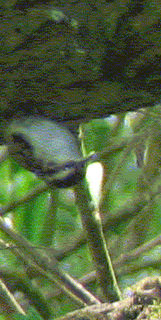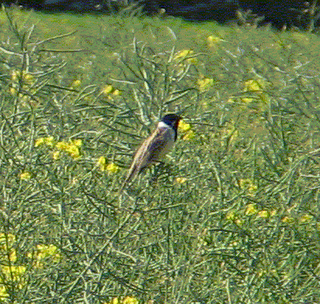The Garden in June

However some birds retain strong colours even at this time of year, as this Goldfinch shows:

More interesting for me is the proliferation of young birds in the garden, including this young Goldfinch (note the absence of facial markings):

The greediest bird on the feeders is without doubt the Greenfinch:

So far in the garden (in six weeks) we have counted 20 species including:
4 Dunnock, including 1 youngster
20+ House Sparrows, of which 10 young birds
2 Swifts flew low - they count!
2 Blue Tits (nesting 2 gardens away)
3 Great Tits, including one youngster
3 Goldfinch, again one youngster
6 Greenfinch
4 Wood Pigeons
4 Collared Dovers
3 Carrion Crows
1 lone male Reed Bunting
1 Sparrowhawk
1 Chaffinch male
4 Robins including 2 youngsters, we think from 2 clutches
30+ starlings, about half are youngsters
4 Magpies
6 Blackbirds
1 Kestrel
1 Bullfinch
1 Wren
1 Feral Pigeon
2 Sand Martins (low passage again)
and a Song Thrush.
We have heard a cuckoo in the garden but scared it off trying to sight it, and also have a nesting pair of Whitethroats in the hedge beyond our garden. There was a green warbler briefly on the fence but the binoculars were outside so I didn't get an ID, probably a Willow Warbler but I can't count it... :(
Last snap today is of a male House Sparrow, he's just filling up before going back into the nest box we put up, to feed the family :)

